Alternaria in the pistachio tree: how to prevent and treat this common disease.
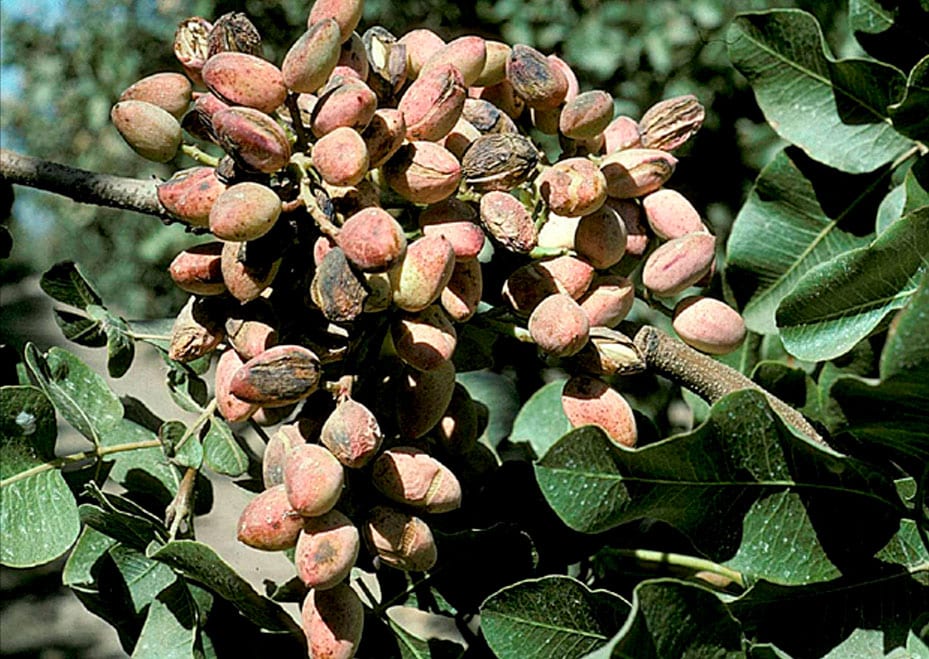
Alternaria alternata (Alternaria, Alternariosis, Late blight) is a fungal disease caused by various ascomycete fungi of the genus Alternaria spp. (A. arborescens, A. tenuissima) that spread through the air (aerial mycosis).
In general terms, they reproduce optimally at temperatures between 27ºC and 32ºC, especially when environmental relative humidity conditions are high. When the temperature rises above 35ºC or falls below 15ºC, the reproduction of the fungi that cause Alternaria is minimal or non-existent. Under adverse conditions, its spores, resistant to desiccation, and also known as conidia, can survive for several years in the soil until the ideal humidity and temperature values for germination are reached.
It is therefore a disease typical of the warmest months of the year, especially summer, and in which preventive practices of a cultural nature are essential.
Rust in the pistachio tree: Pileolaria terebinthi C. and its impact
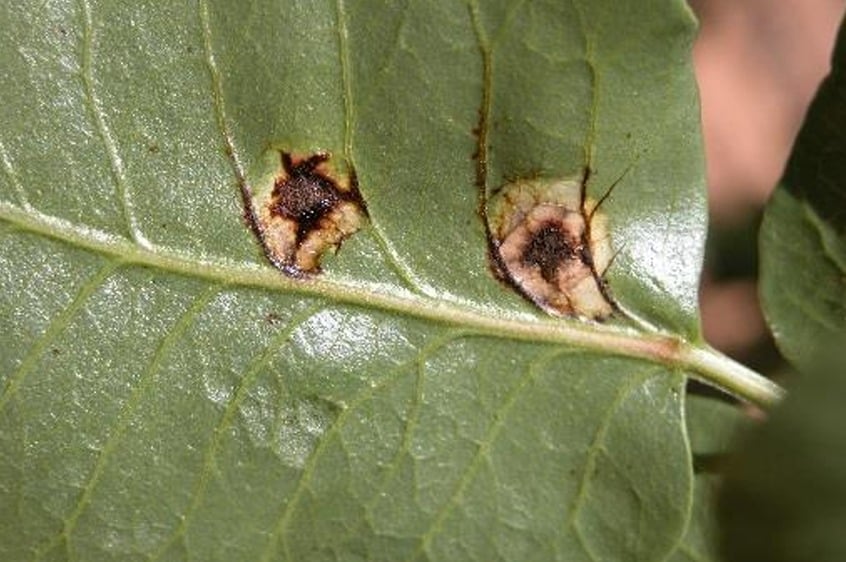
Rust (Pileolaria terebinthi C.) is a disease that affects the pistachio tree, producing spots on the leaves and causing their premature fall. These spots are a sign of necrosis and can have a significant impact on pistachio crops. In this article, the characteristics and causes of the disease will be discussed, as well as the symptoms, prevention and control methods, and other common diseases and pests in pistachio cultivation. Recommendations will also be provided for the proper management and maintenance of the pistachio tree.
Septoriasis in the pistachio tree: Causes, symptoms and control measures.
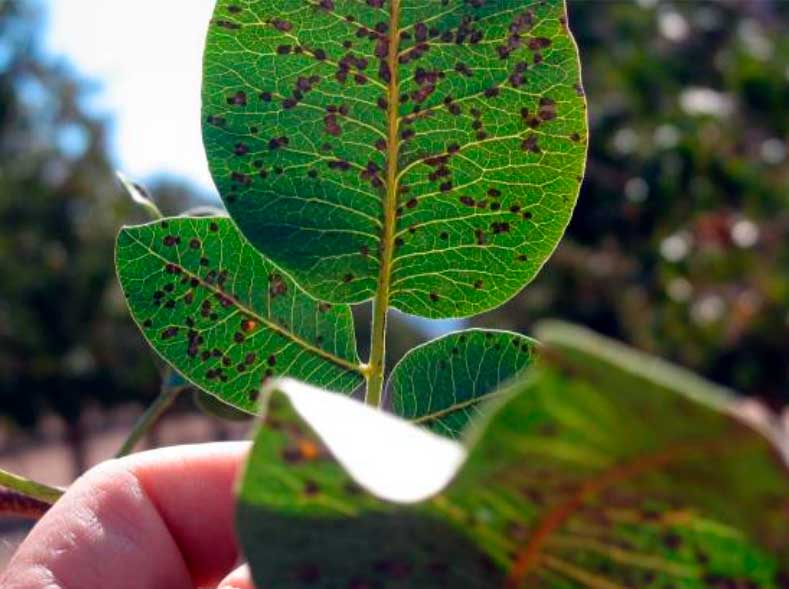
Septoria is a disease that affects the pistachio tree, common in all producing countries, caused by ascomycete fungi, such as Pseudocercospora pistacina, Septoria pistaciarum, S. pistaciae and Cylindroseptoria pistaciae. During the winter, the fungus remains on fallen leaves and is released in spring. In fact, spring rains are a key factor in the epidemiology of the disease.
Symptoms include irregular brown necrotic leaf spots between 1 and 2 mm. In size in leaves and fruits, which can increase in size, covering the leaf completely. To prevent the disease, it is recommended to prune infected branches, collect affected leaves and fruits and avoid imbalances in fertilization. There are also preventive treatments based on copper, potassium oleate and other fungicides. There are currently several investigations underway to improve the control of septoria in pistachios.
Verticillium in the pistachio tree: a serious disease that you should be aware of to protect your crop.
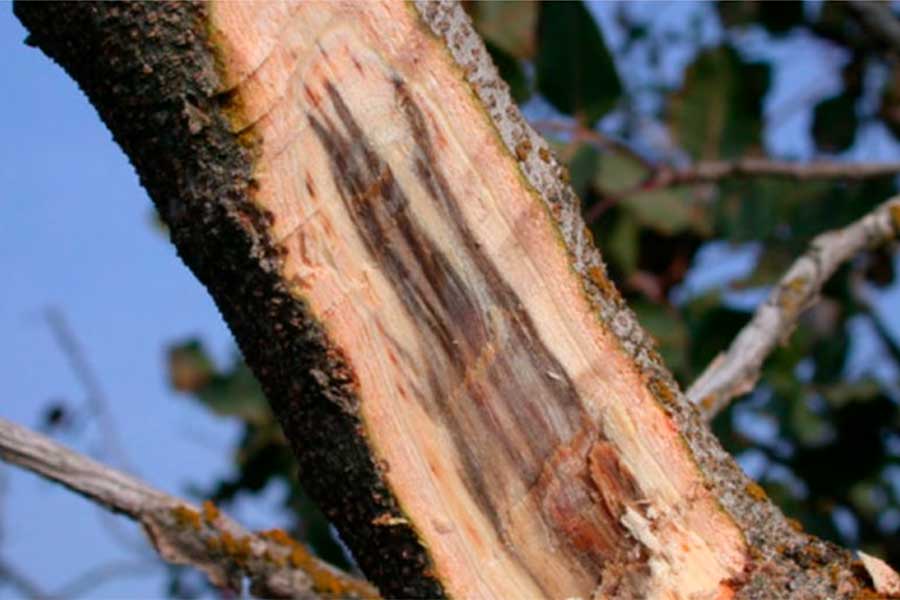
Verticillosis is a fungal disease that can affect the pistachio crop. It is caused by the fungus Verticillium dahliae Kleb and is transmitted through the soil and can remain in it for many years. Among the symptoms that it can cause in the pistachio tree are the wilting of branches and necrotic spots on the leaves and fruits. To prevent this disease, it is important to carry out appropriate tillage and care practices, such as selecting resistant varieties, soil analysis, and avoiding waterlogging. Additionally, fungicide treatments are available to control the disease.
Botriosphere: Prevention and control in pistachio cultivation.
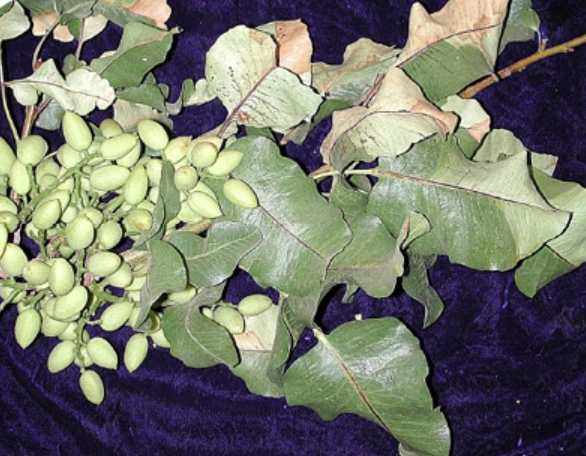
Botrisphere (Botryosphaeria spp.) is a disease associated with fungal gen. Botryosphaeria, Diplodia, Neofusicoccum... described in California in 1984 and affecting a wide range of hosts. Periods of high RH alternating with dry periods favor the incidence of the disease. The highest risk of infection occurs in spring, between the end of March and the end of May, especially with spring rains and temperatures above 10ºC. Among all pistachio plant varieties, Kerman is the most susceptible.
